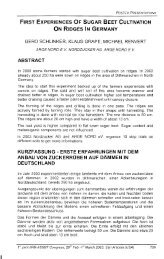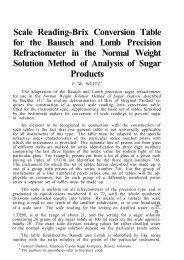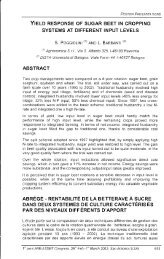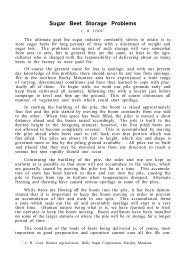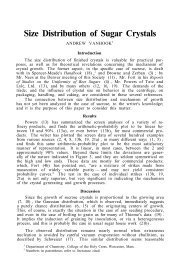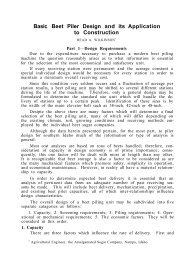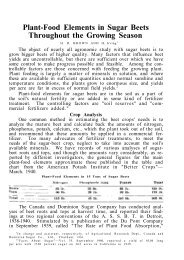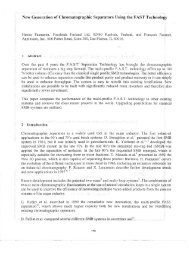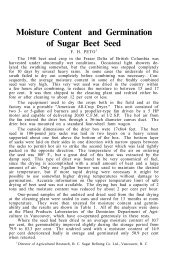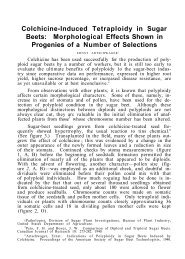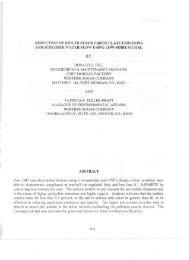Some illustrations of methods in plant breeding - ASSBT Proceedings
Some illustrations of methods in plant breeding - ASSBT Proceedings
Some illustrations of methods in plant breeding - ASSBT Proceedings
You also want an ePaper? Increase the reach of your titles
YUMPU automatically turns print PDFs into web optimized ePapers that Google loves.
-12-<br />
~ct<strong>in</strong>g crosses from <strong>in</strong>bred l<strong>in</strong>es avcdlable<br />
1. Determ<strong>in</strong>e best comb<strong>in</strong>ers <strong>in</strong> <strong>in</strong>bred-.varie ty crosses.<br />
2. Make a~l possible s<strong>in</strong>gle crosses between unrelated l<strong>in</strong>es.<br />
3• Predict yield <strong>of</strong> double crosses.<br />
4. Me,ke yield trials <strong>of</strong> actual double crosses.<br />
Jenk<strong>in</strong>s (10) compared various methocls <strong>of</strong> test<strong>in</strong>g the comb<strong>in</strong><strong>in</strong>g ability<br />
<strong>of</strong> <strong>in</strong>bred l<strong>in</strong>es <strong>in</strong> double crosses us<strong>in</strong>g s<strong>in</strong>gle crosses as one method <strong>of</strong> pre-.<br />
diet<strong>in</strong>g the yield<strong>in</strong>,_:,. ability <strong>of</strong> double crosses. Doxtater and Jor.nson ( 4) made<br />
a further study <strong>of</strong> s<strong>in</strong>gle crosses as a means <strong>of</strong> predict<strong>in</strong>g the yield <strong>of</strong> a<br />
particular double cross. The follo\v<strong>in</strong>g data is taken from the 1J·l0rk <strong>of</strong><br />
Anderson (1) and shows how s<strong>in</strong>gle crosses are used to make such a prediction.<br />
The yield <strong>of</strong> a particular double cross may be determ<strong>in</strong>ed lifi th accuracy from<br />
the average yield <strong>of</strong> the four s<strong>in</strong>gle crosses not used as parents <strong>in</strong> the double<br />
cross. From any four <strong>in</strong>bred l<strong>in</strong>es six s<strong>in</strong>gle crosses can be made and three<br />
different double crosses. One <strong>of</strong> these three double crosses frequently yields<br />
more than the other twoo<br />
The <strong>in</strong>breds that yield viell <strong>in</strong> <strong>in</strong>bred..-variety crosses may be tested <strong>in</strong><br />
s<strong>in</strong>gle crosses and their yield<strong>in</strong>g ability <strong>in</strong> double crosses predicted, as<br />
illustrated from data presented by Anderson.<br />
Ill!ethod <strong>of</strong> predict<strong>in</strong>g double cross yields from s<strong>in</strong>gle eros s data<br />
(2]x24) x . (26x27) ( 2~x26) x (24x27)<br />
( 23x26) 62 .. 6 (2Jx24) 41.7<br />
(23x27) 70.8 (23x27) 70.8<br />
(24x26) 65o6 (26x24) 65.6<br />
( 24x27) 72ol ( 26x27) 64.2<br />
Av. 67 .. 8 Av. E"i5. 6<br />
( 23x27) x (24x26)<br />
(23x24) 41.7<br />
( 23x26) 62.6<br />
(24x27) 72.1<br />
(26x27) 64.2<br />
Av. 60.2<br />
A comparison <strong>of</strong> actual and predicted yields <strong>of</strong> double crosses by<br />
Anderson is given to show the value <strong>of</strong> the method.<br />
... _<br />
A comparison <strong>of</strong> actual and predicted yields (after And erson)<br />
L<strong>in</strong>es comb<strong>in</strong>ed<br />
23,24,26,27 .<br />
(23x24) x (26x27)<br />
( 23x26) ·X ( 24x27)<br />
(23x27) x (24x26)<br />
23,24,26,28 .<br />
( 23x24) x ( 26x28)<br />
(23x26) X (24x28)<br />
(23x28) x (24x26)<br />
Bu. p er A.<br />
Actual PreQicted<br />
68.8<br />
62.4<br />
62.0<br />
67 .s<br />
ED .6<br />
6o.2<br />
(cont<strong>in</strong>ued)<br />
I



